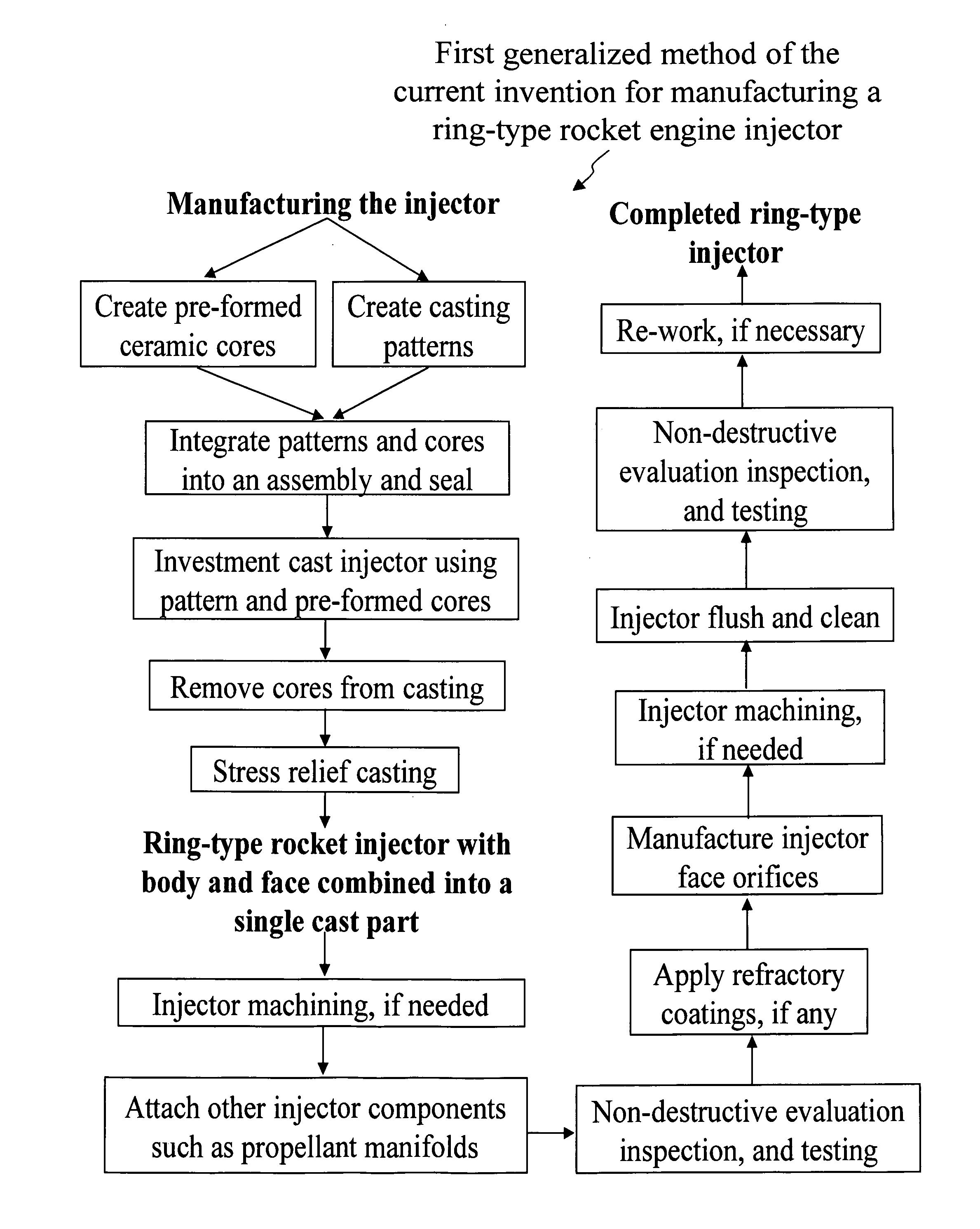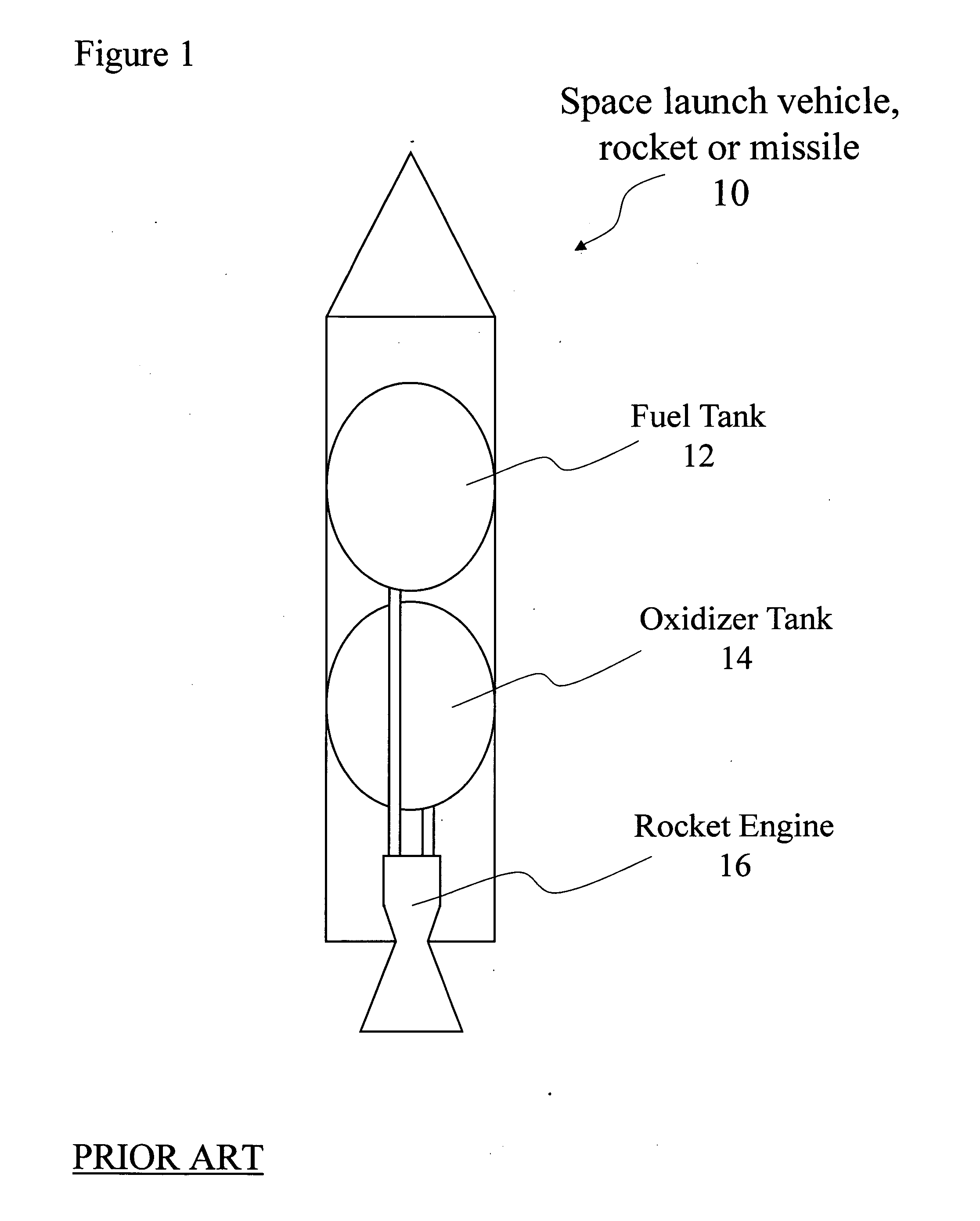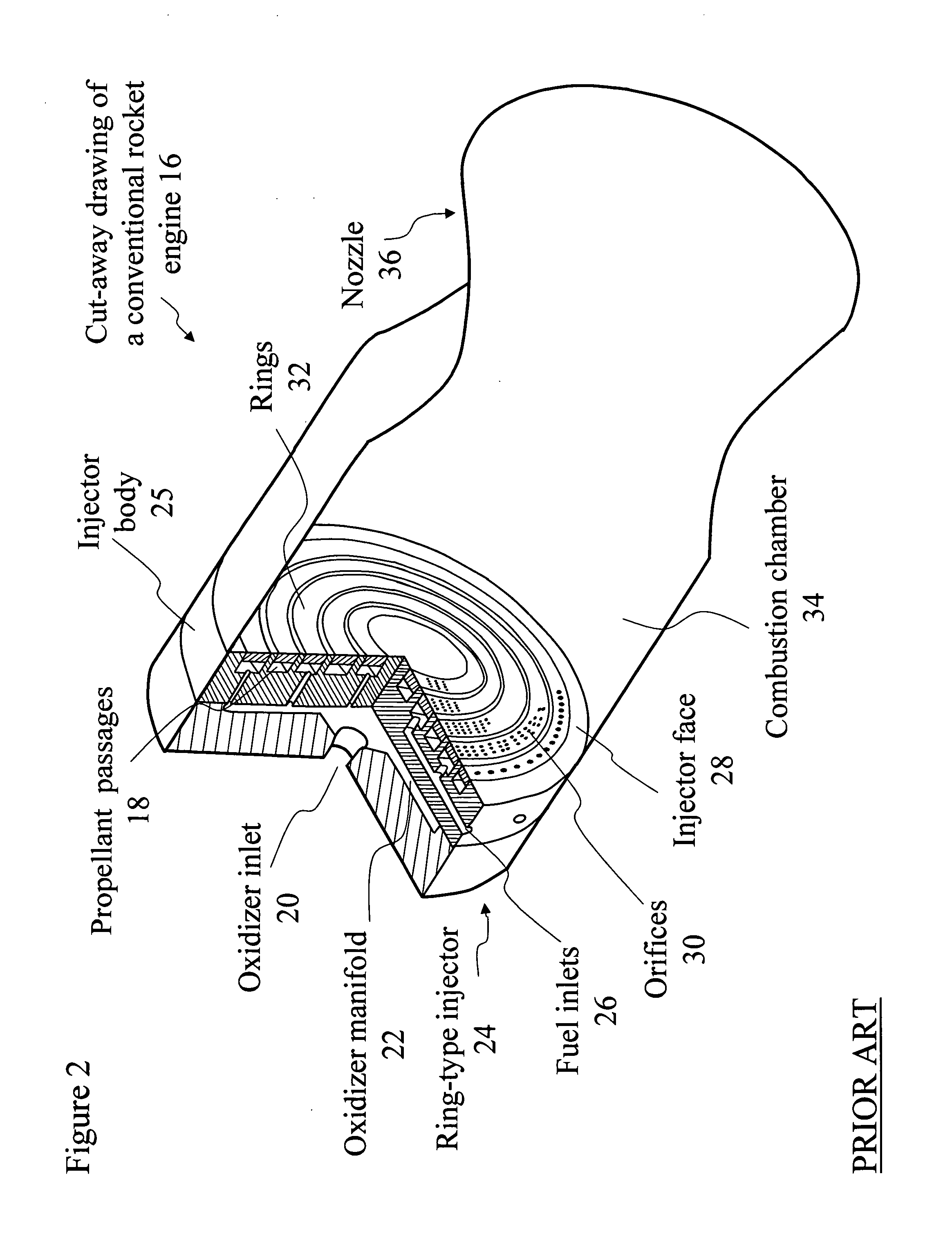This results in a large number of joints that require an extensive amount of manual fit-up to assure the close tolerances necessary for a sound braze joint.
It also results in extensive
quality control inspection and testing at great expense.
This
machining may cause some
metal smearing or movement of
metal into orifices, which can cause misdirection of the orifice streams or reduced orifice flow rates, and thus poor mixing and non-uniform
combustion.
Use of closeout plugs is not ideal as they can leak, causing
burnout areas in the injector.
Mechanically drilling orifices in injector faces that have already been coated is difficult, because the
refractory coatings are generally very hard and
abrasive, and can result in deformed orifice exits and thus poor mixing and
combustion.
Applying
refractory coatings to injectors after the orifices have been drilled frequently causes problems such as the movement of the
coating material into orifices, which can misdirect the orifice streams or reduce orifice flow rates, and thus contribute to poor mixing and
combustion.
Attempts to protect the pre-drilled orifices during the
coating process such as inserting temporary plugs or other masking techniques have often proven unsatisfactory.
EDM and ECM processes have been successfully used in the past to
drill rocket engine injector orifices for the cases where both sides of the orifices are completely accessible but have often been unsuccessful with “blind inlets,” in which there is no direct
physical access to the inlet side of the orifice.
Examples of orifice-derived injector problems include detachment of the flow from the orifice wall that increases injector pressure drop and lowers overall engine thrust,
combustion chamber wall overheating due to orifice inlet or outlet burrs in the outer rings, and large variations in injector pressure drop due to variations in orifice inlet geometries.
Such problems can lead to injector failures and
rocket engine operational problems.
These problems can be particularly challenging in situations where the orifices have blind inlets, such as the case of when orifices are drilled after the injector rings are welded or brazed into the injector body.
It can be difficult, sometimes impossible, to thoroughly test the
soundness or integrity of the joints, particularly to determine if there is leakage between the fuel and oxidizer propellants.
Leakage in the injector can lead to premature mixing of the propellants and often result in extensive damage or destruction of the injector, which in turn can lead to damage or destruction of the engine or entire rocket.
Precise orifice placement is critical to the proper functioning of the injector as errors can cause
combustion instability and extreme localized heating in certain areas of the
combustion chamber, such as
thrust chamber streaking or injector face
erosion, which can damage or even destroy the chamber, engine, or even the entire rocket.
Injector failures can lead to propulsion
system and launch mission failures.
A May 1999
Delta 3 rocket, for example, had a catastrophic in-flight failure due to the failure of a braze in the
combustion chamber of the RL 10B-2 upper stage engine.
A February 1998 Japanese H-II
rocket launch was destroyed because of a combustion chamber braze failure in the second firing of the second stage LE-5A engine.
The uncertainties and subjectivity of conventional manufacturing methods such as
brazing and
welding of current art injectors require multiple injector manufacturing, inspection, testing, and
rework cycles, contributing to both lengthy injector manufacturing times and high manufacturing costs.
An integral face, where the face is a single piece, is generally not possible for ring-type injectors due to the difficulty in attaching the face to the injector body's
propellant racetrack edges without leaks that could lead to injector
burnout and engine or mission failure.
Brazing techniques to join a single piece face with the injector body, such as vacuum
brazing in a furnace, have been applied but with limited success.
Rocket Engine Injectors) notes that face
casting has not been developed for a production injector for any material other than aluminum, a material that is generally suited only for hypergolic propellants and not the cryogenic propellants used in most
space launch rockets.
Current art rocket engine injectors are generally very expensive.
Since current art
space launch vehicles today are only launched at most a handful of times a year and these rockets generally all use unique injector designs, rocket engine injector production rates are extremely low.
These negligible economies of scale further contribute to extremely high, current art, rocket engine injector manufacturing costs.
For planned, future, very low cost space launch systems with designs employing a large number of rocket engines, however, there are relatively high economies of scale and lowering injector manufacturing costs is critical.
The
investment casting process is very difficult to apply to such a complex shape as a single-piece injector body and face.
As noted above, orifice
quality control is severely challenged by mechanical drilling of the orifices, which generally leaves burrs and residual metallic bits that can disrupt the
propellant flow through the orifices, and orifice inlet
quality control is even more difficult with blind inlets, which are a result of a single piece injector face and body combination.
However, while castings are sometimes used to form a blank that is machined to create current art rocket injector bodies, literature searches turned up no evidence of the
investment casting process used to make rocket engine injectors.
Ring-type rocket engine injectors for even modest sized space launch rocket engines today can cost $50,000 to $300,000 to manufacture, take a long time to fabricate, and require extensive testing and
rework to ensure adequate quality.
 Login to View More
Login to View More 


